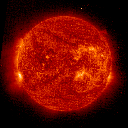Beach closed

Well, I'm sure Sandy wasn't closed, but I was. Or, rather, I was away from home for much of the day, actually at a beach further south, at Coffs Harbour.
Towards nightfall I took a short stroll on the harbour beach and was quickly alerted by the call of "Ark! Ark!" I saw a couple of fishing boats, but no ark, then realised that (as I walked through the trees edging the sand) above my head was a very agitated member of the genus Corvus. It was an Australian crow (Corvus orru) the larger of the two indigenous crows, the smaller being the Little crow (durr), whose $10 name is Corvus bennetti.
Crows and ravens, both of which interest me from a world folklore perspective (I'm collecting black bird lore at the moment and will assemble a page sometime), are both Corvidae represented by local species. I thought for a moment that this big one was worried about my presence, which struck me as odd because crows generally don't scream when I'm around, unlike some birds I've met. (Groan. Well, I did reel in the "bird" pun on Thursday when talking about drunk and stoned lorikeets, and that was a perfect comic feed, plus it's late and I'm tired, so cut me some latitude, willya?)
But no, Old Crow was 'flipping the bird' (as the British say, or 'giving the finger' as we say here) at a pair of Calyptorhynchus funereus, or Yellow-tailed black cockatoos, who probably should have known better than to step over the crows' invisible territorial boundary. Crows are so touchy.
That's the black cocky in the sidebar at left, from an old engraving after the painting by the English ornithologist John Gould (1804 - 1881), whose name is a by-word in this country for exquisite 19th-century bird illustration. In the late 1830s and the 1840s, his work on Australian birds was monumental. Click the sidebar image for more about this cocky, from a South Australian perspective. In that state, they are struggling for their very existence as we humans seem intent on wiping them out.
As big, or bigger, than the caged white cockies you might have seen in your country, which are their cousins and also from this continent, the Yellow-tailed black cocky, like the Red-tailed black cockatoo (Calyptorhynchus banksii), is one of the most spectacular birds of the bush. As they are an endearing and, one hopes, enduring part of the Sandy Beach environment, I'll have more to say about them anon. But after a long day I've been to a barbecue and eaten far too much even to sit much longer.
Local folklore has it that black cockies appear before rain. I have no evidence of this belief being true, and am by nature a wicked sceptic. I should report, though, that it was three hours ago that I saw them, and it wasn't raining then. But it's raining now.
Another feature of Coffs Harbour wildlife is the ferocious Mississippi mudcake (Chocolatus indigestibilis), an encounter with which this evening has changed me from one who was famished to one who is vanquished. And this was after pitting my strength against an enormous bird of the genus Gallus.
It's good to get home, and I bid my friends "Make a great day". Ark!



















1 Comments:
Thanks for the info and the great link, Stuart. Some very interesting articles and beautiful photos there.
Post a Comment
<< Home